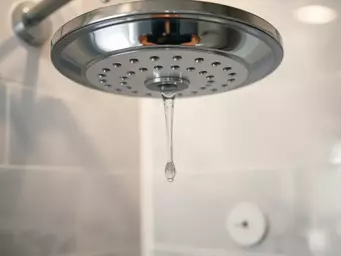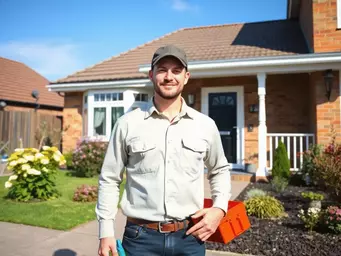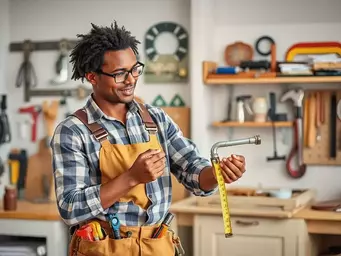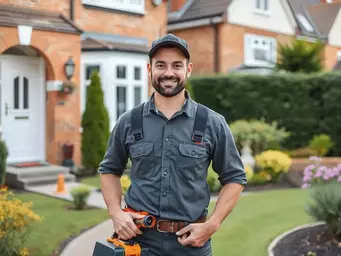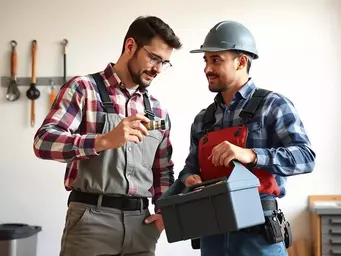Practical DIY Plumbing and Electrical
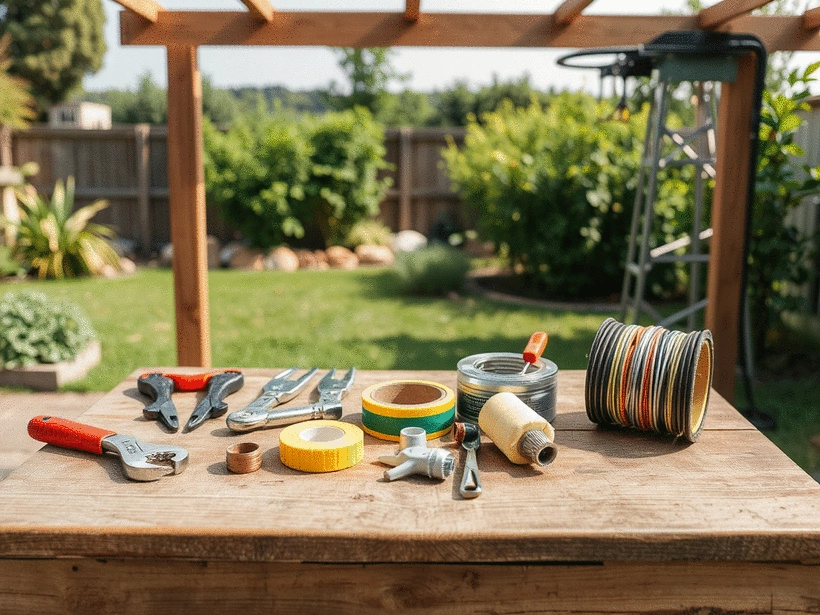
Have you ever considered tackling your outdoor plumbing or electrical repairs? With the right knowledge and preparation, you can take on these tasks confidently. Let's dive into the essentials you need to know!
What You Will Learn
- Essential protective gear and tools required for safe outdoor DIY projects.
- The importance of understanding local building codes before starting your repairs.
- Common challenges that can arise during outdoor repairs and how to overcome them.
- Key safety guidelines to follow for plumbing and electrical work.
- When it's best to call a professional rather than tackling repairs yourself.
- Handyman tips for ensuring successful and durable repairs.
Key Safety Guidelines for Outdoor DIY Projects
Understanding when to handle tasks yourself and when to call a professional is crucial for safe and effective outdoor repairs. Below is a comparison of common DIY tasks versus those that typically require professional assistance.
DIY Tasks: Tackle with Confidence
- ✓ Fixing a leaky hose bib
- ✓ Installing outdoor lighting (low voltage)
- ✓ Minor pipe sealing (e.g., with pipe sealants)
- ✓ Replacing basic outdoor fixtures
*Requires prior safety checks & basic tools.
Professional Tasks: When to Call an Expert
- ✖ Complex electrical issues
- ✖ Major plumbing repairs
- ✖ Tasks requiring permits or code familiarity
- ✖ Faulty wiring or corroded pipes
*Ensures compliance & avoids potential damage.
Understanding DIY Exterior Plumbing and Electrical Fixes
Before you dive into your outdoor DIY projects, it’s crucial to grasp the basics of both plumbing and electrical safety. Whether you're fixing a leaky hose bib or installing outdoor lighting, having the right tools and materials is vital. Start by familiarizing yourself with essential safety protocols, as they will keep you and your home safe. Here’s what you’ll need:
- Protective gear: gloves, goggles, and sturdy footwear
- Basic tools: wrenches, screwdrivers, and pliers
- Specialized equipment: pipe sealants, electrical tape, and a multimeter
- Materials specific to your task, like pipes or wiring

Having all these items in place before starting your project will set you up for success. Remember, preparation is key to a smooth workflow!
What You Need to Know Before Starting Your DIY Projects
As an experienced property maintenance expert, I can tell you that planning is half the battle won! Make sure to read up on your project specifics, especially concerning local building codes. For instance, understanding the different types of plumbing pipes, like those detailed in a PEX Design Guide or the VA Plumbing Design Manual, can be invaluable. Not only will this ensure compliance, but it will also help you avoid common pitfalls. Before starting, take a quick inventory of your tools and materials to ensure you have everything ready to go.
Common Challenges Faced in Outdoor Repairs
Working outdoors often comes with its own set of challenges. One of the most significant issues is dealing with unpredictable weather. Rain or extreme heat can impact your project timeline. Additionally, access to work areas can sometimes be limited, especially in tight spaces or landscaped gardens. Here are some common challenges you might face:
- Inconsistent weather conditions affecting your ability to work
- Limited access to areas where repairs are needed
- Unexpected issues like corroded pipes or faulty wiring
Staying aware of these challenges and having a flexible mindset will help you adapt and overcome any hurdles you encounter.
Handyman Tips for Successful Outdoor Projects
Over the years at BigFunction Property Maintenance, I've gathered some handy tips from various professionals in the field. One crucial piece of advice is to take your time during the planning phase. Rushing can lead to costly mistakes! Here are some tips to keep in mind:
- Always double-check your measurements before cutting materials.
- Use high-quality materials to ensure durability.
- Consult tutorials or guides specific to your repair task for additional insights.
Following these tips will not only make your projects easier but will also enhance the quality of your work.
Essential Safety Guidelines for Outdoor Repairs
Preparing for Safe DIY Work
Before you even think about starting a DIY project, safety must come first! Here’s how you can prepare:
- Shut off power and water to the work area to prevent accidents.
- Wear Personal Protective Equipment (PPE) like gloves and goggles.
- Familiarize yourself with local codes and regulations to ensure compliance, such as those outlined in the Ohio Plumbing Code.
Taking these precautions ensures that you minimize risks and keep your repair efforts safe and effective.
Recognizing When to Call a Professional
It’s essential to know your limits. If you encounter a problem that feels beyond your expertise, don’t hesitate to call in a professional. Here are some criteria to consider:
- Complex electrical issues that require advanced knowledge
- Major plumbing repairs that could cause significant damage if mishandled
- Tasks involving permits or local codes you’re unfamiliar with
Trust me, knowing when to step back is just as important as being able to tackle the projects yourself.
Understanding Electrical Safety in DIY Projects
When working with electricity, safety should be your top priority. Make sure you understand some key considerations:
- Always turn off the circuit before starting any electrical work.
- Use the right tools and PPE for electrical jobs.
- Calculate electrical loads correctly to prevent overloads.
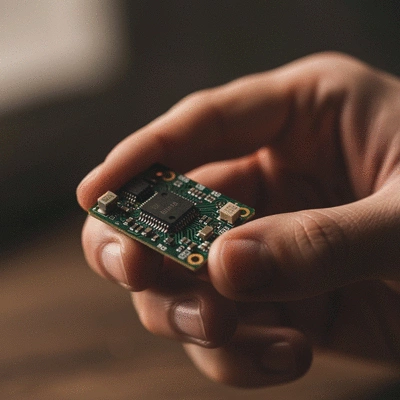
By following these safety practices, you can confidently handle electrical projects without risking your safety.
Pro Tip
Did you know? Before starting any outdoor DIY project, it's beneficial to create a detailed plan that outlines each step. This not only helps in organizing your workflow but also minimizes the chances of overlooking essential tasks. Consider sketching a rough layout of your project area and listing out all the materials and tools you’ll need. A little preparation goes a long way in ensuring a smooth and successful repair process!
Frequently Asked Questions About Outdoor DIY Repairs
Q1: What protective gear is essential for outdoor DIY projects?
A1: Essential protective gear includes gloves, safety goggles, and sturdy footwear. Depending on the task, additional gear like a hard hat or ear protection might be necessary.
Q2: Why is it important to understand local building codes before starting repairs?
A2: Understanding local building codes ensures compliance with regulations, prevents potential fines, and helps guarantee the safety and longevity of your repairs. It can also help you avoid common pitfalls and ensure your work meets quality standards.
Q3: What are some common challenges in outdoor repairs and how can I overcome them?
A3: Common challenges include unpredictable weather, limited access to work areas, and unexpected issues like corroded pipes or faulty wiring. Overcome these by planning ahead, having a flexible mindset, and being prepared with the right tools and materials.
Q4: When should I call a professional for outdoor plumbing or electrical work?
A4: You should call a professional for complex electrical issues, major plumbing repairs that could cause significant damage if mishandled, or tasks requiring permits or specialized knowledge of local codes that you are unfamiliar with.
Q5: What are some handyman tips for successful outdoor projects?
A5: Handyman tips include taking your time during the planning phase, double-checking measurements, using high-quality materials for durability, and consulting tutorials or guides specific to your repair task for additional insights.
Summarizing Key Takeaways for Safe and Effective DIY Repairs
When it comes to tackling outdoor DIY projects, safety should always be your top priority. Whether you're fixing plumbing or electrical issues, it's essential to follow proper protocols and know when it’s time to call in a professional. By doing so, you'll not only protect yourself but also ensure that your repairs stand the test of time!
Remember, taking shortcuts can lead to costly mistakes or even dangerous situations. Always take the time to assess your skills and the complexity of the task at hand. If you feel unsure, it’s wise to reach out to a qualified tradesperson. At BigFunction Property Maintenance, we encourage every homeowner to be informed and cautious!
Safety Comes First in DIY Outdoor Work
Here are some essential safety tips to keep in mind while working on outdoor DIY projects:
- Always turn off power and water before starting any repairs.
- Use appropriate Personal Protective Equipment (PPE), such as gloves and safety goggles.
- Familiarize yourself with local building codes to ensure compliance.
- Have a first aid kit on hand for any unexpected accidents.
These steps are not just formalities; they help minimize risks and make your DIY experience a positive one. It’s about working smart, not just hard!
Your Next Steps in Outdoor DIY Projects
Feeling inspired? Start small! Use the comprehensive guides we've shared to tackle simpler projects before moving on to more complex repairs. Always remember to check local codes to make sure you’re compliant. This is crucial for not only ensuring safety but also for the longevity of your work.
As you gain confidence, you can expand your DIY skills. Just take it one step at a time, and don't hesitate to reach out if you have questions or need guidance. We’re here to help you navigate these projects with ease!
Engage with Us for More Tips and Guidance
Join Our Community for Ongoing Support
We’d love for you to become part of our community! At BigFunction Property Maintenance, we offer numerous resources, including forums and newsletters, where you can share experiences and seek advice from fellow DIY enthusiasts.
Joining our community not only keeps you informed with the latest tips but also connects you with others who share your passion for home maintenance. Together, we can build a network of support that empowers homeowners in Hertfordshire and beyond!
Consider Sharing Your Success Stories
Have you recently completed a DIY project? Share your success stories! We encourage our readers to showcase their outdoor DIY outcomes and lessons learned. Your experiences can inspire others in the community and promote a spirit of collaboration.
By sharing, you contribute to a culture of learning and support—something we value deeply at BigFunction Property Maintenance. So, snap some pictures and let us know how your projects turned out. We can’t wait to celebrate your achievements with you!
Recap of Key Points
Here is a quick recap of the important points discussed in the article:
- Always prioritize safety by using protective gear and shutting off power and water before starting any repairs.
- Plan your projects thoroughly and familiarize yourself with local building codes to avoid pitfalls.
- Be prepared for common challenges such as unpredictable weather and limited access to work areas.
- Use high-quality materials and double-check your measurements to ensure successful repairs.
- Know your limits; call a professional for complex electrical or plumbing issues beyond your expertise.
